An icon returns – revived by AMG
History of Mercedes SL
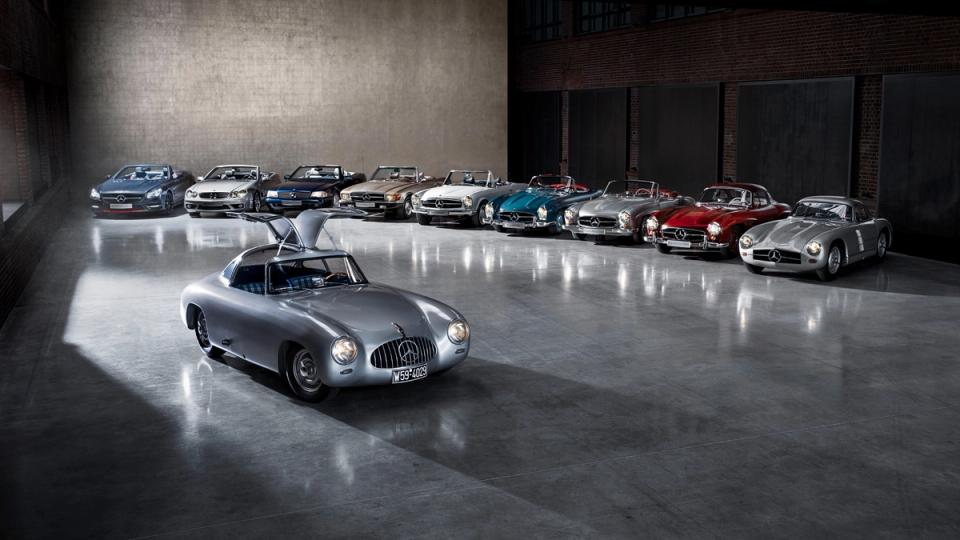
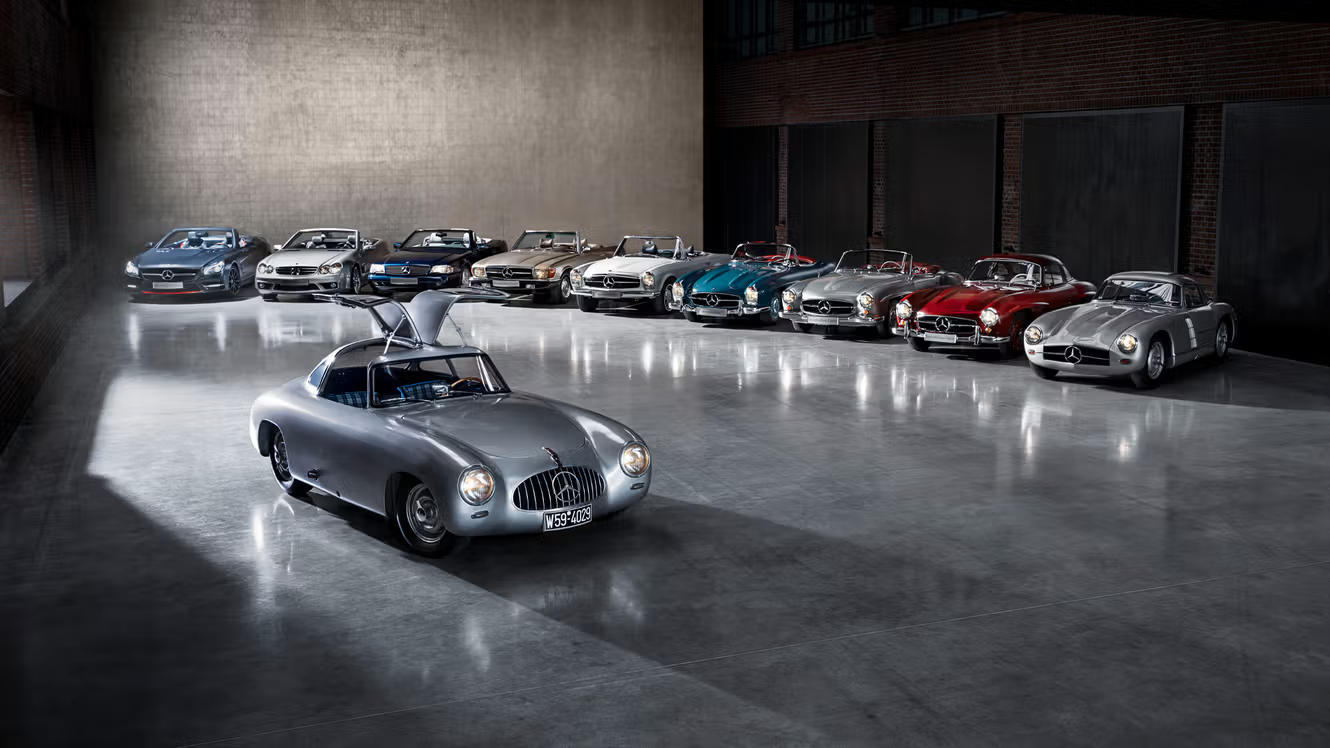
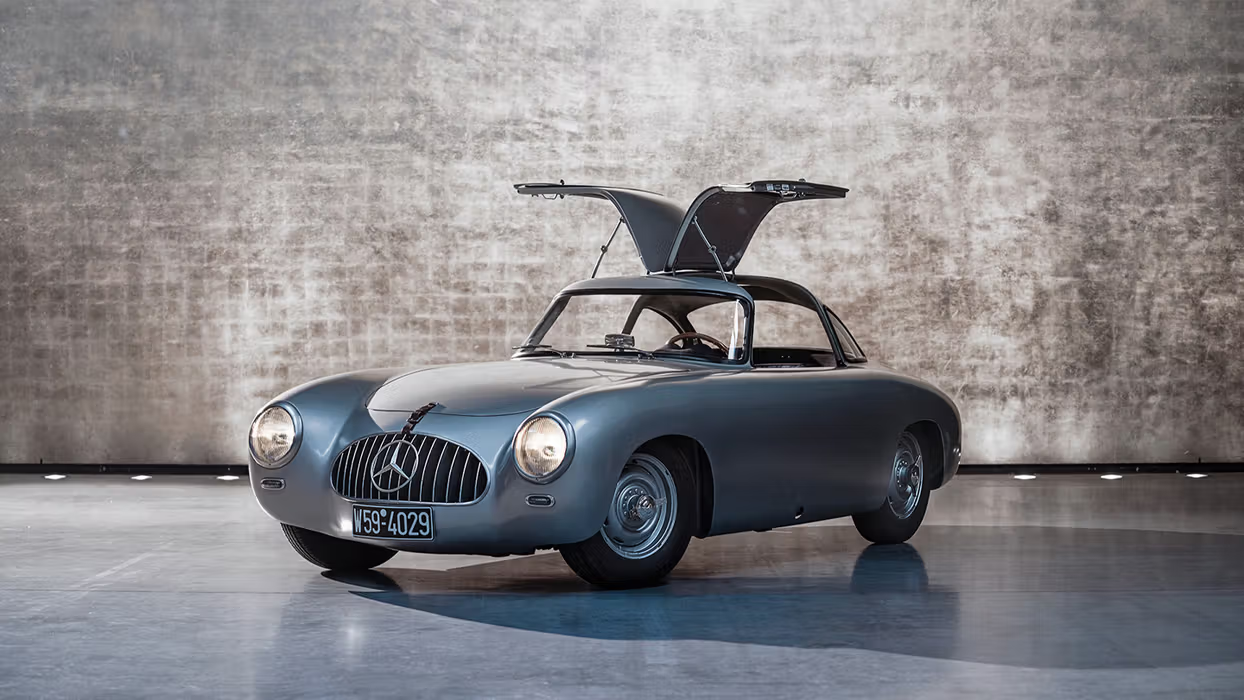
In 1952, there was little reason for many motorsport enthusiasts to celebrate. Why? Mercedes-Benz. In the early 50s, the brand decided to return to racing – and pulled away from the pack. The 300 SL, developed by gifted engineers, stepped onto the world stage. With two double, one triple, and even a quadruple victory in the five most important races of the year, it completely outperformed the competition. A legend was born. Who would have thought that it would hit the road as a production car just two years later?
Nearly 70 years of uninterrupted history later, a new chapter beckons. For the R 232 series, the development of the SL is in the hands of Mercedes-AMG for the first time. Great hands at that, of course, because as Jochen Hermann, Technical Managing Director at Mercedes-AMG, says: "We have to put a car on the road that makes everyone say, Wow, an icon is back – and it's still an AMG."
But what actually defines this icon? What gives for the enduring fascination? Indeed, it is probably greater than ever. When Hermann talks to Heck about the SL legend, you can hardly stop them. Nor do you want to.
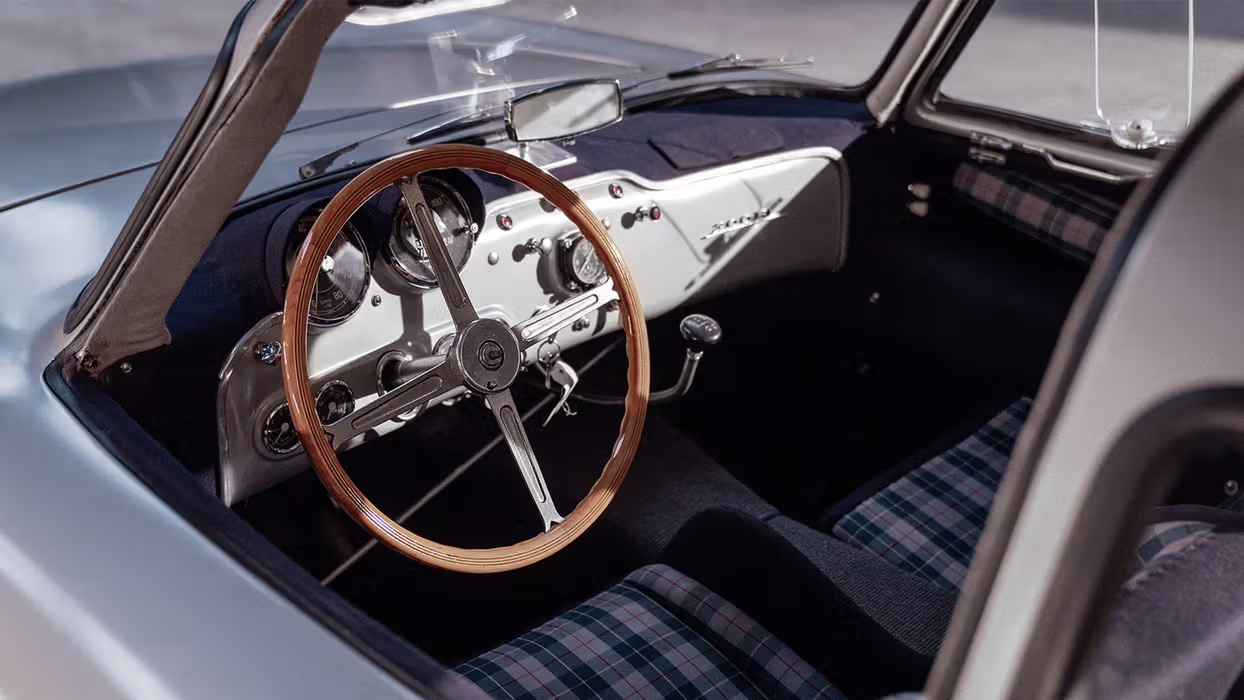
The Mercedes-Benz 300 SL is a time machine. One that takes you back to the beginnings of the Federal Republic of Germany. To an era "in which people had come around to normal cars," as Hermann says. The SL 300 certainly wasn't normal. "The roads had just been repaired, and then suddenly a car comes along 'out of space'," says Hermann, referring to the spectacular exterior of the 300 SL Gullwing. But not only that: "The 300 SL was technically ahead of everything in every aspect, and that was the case for years to come," Hermann says.
Heck sees it the same way. "The SL's numerous innovations are all part of the legend," the Mercedes-Benz Classic expert tells us. "For example, it was the first production car with fuel injection.” – an achievement, however impressive, that wasn't even necessary for its motorsport victories. In fact, the car was underpowered compared to the competition, with a carburetor, and producing a modest 170 hp. Still, it was more than enough.
The tubular trellis frame designed by Rudolf Uhlenhaut was a primary reason for the car's success. It still inspires Heck to this day: "Picture a delicate construction made of thin tubes. It's extremely rigid, and yet incredibly light." What's hidden under the aluminum-magnesium sheet body weighs just 50 kilograms. The thin tubes are connected in such a way that they are only subjected to compression and tension. A masterpiece of engineering.
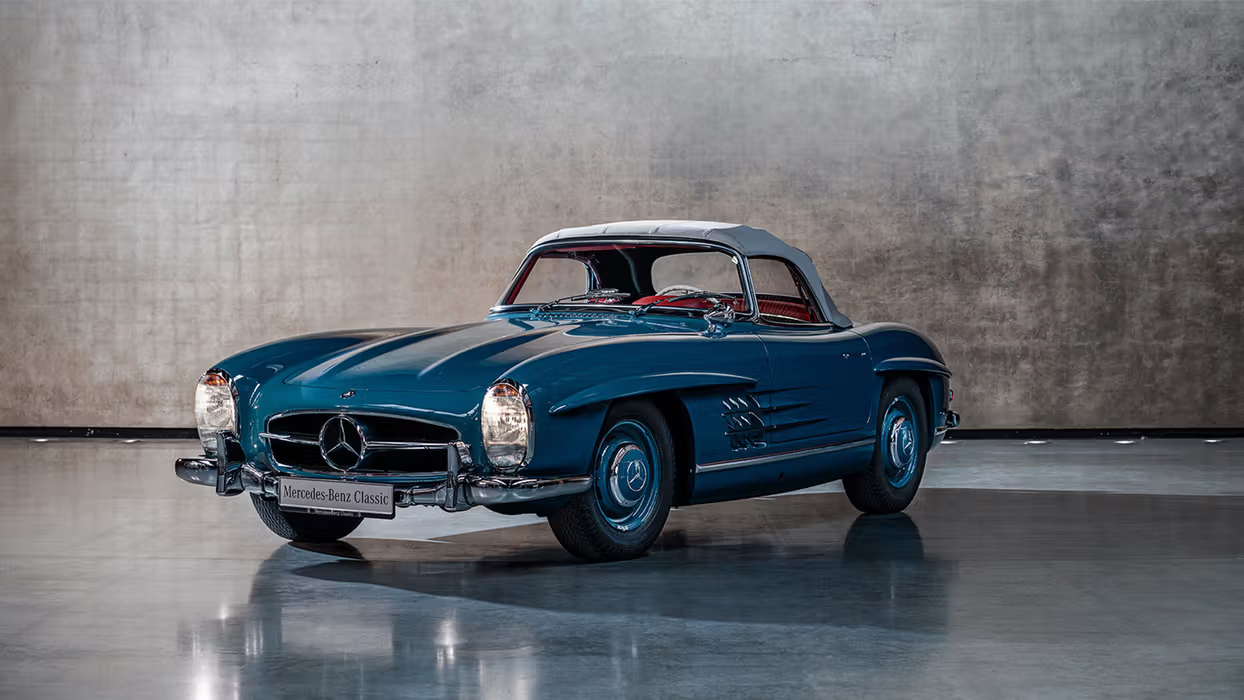
No wonder, then, that thoughts quickly turned to the possibility of a production car. "People were actually busy with other issues than motorsports so soon after World War II. But sport also helps to revive positive emotions," says Heck, adding that people were in the mood to get excited again. "Germany won the World Cup in 1954, the same year the gullwing hit production and Mercedes-Benz won the Formula 1 World Championship." After the SL's motorsport triumph in 1952, Heck says it became a priority to make the car buyable: "Customers must be allowed to experience it." They were allowed to, but had to be flexible – the tubular frame was also adopted in series production. Slightly modified, from 1954 onwards it featured somewhat larger door openings than on the original race car. The wide sill, meanwhile, remained. This also applied to the Roadster, which followed in 1957 and reinforced the success of the 300 SL.
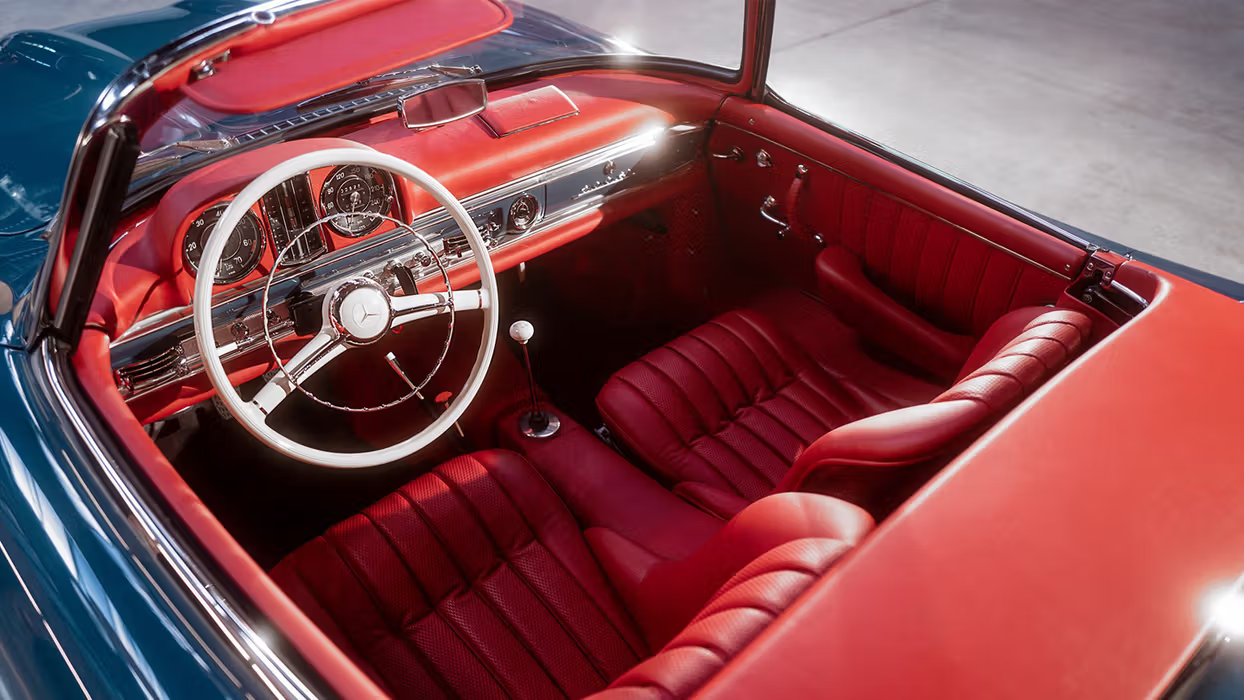
The new "made by AMG" SL has big tires to fill. After all, this is not the first car to be developed entirely by AMG. Before it came the SLS and the subsequent Mercedes-AMG GT. Hermann believes the responsibility and challenges are even greater than for a model without a predecessor. "The expectations for a new car are always high. When there's a star on it and the three letters are added, they're huge," says the AMG CTO. "But with the SL, we not only had to bring an icon into the future, but also align it with the AMG brand.”
A challenge that, from Heck's point of view, all developers of a new SL generation had to face in some way and which started with the famous W 113 series "Pagoda" in 1963. "It was actually lower in performance and slower than its predecessor," says Heck. "You have to have guts to do that." Still, looking back, no one would dispute the Pagoda's place in SL history. "Nobody says it's slower and weaker than its predecessor. Sure, it's different, but it is still a real SL."
In addition to the spirit of the original SL, the Pagoda also embodies a lifestyle element. "At the time, the engineers asked themselves, How do we manage to combine power and sportiness with elegance, luxury and lifestyle?" says Heck. "It was no longer just this purebred sports car that you had to be able to drive." There was also increasing emphasis on driver and passenger safety. The W 113 series was the first sports car with protective bodywork, a larger crumple zone, and an interior with defused plastic elements.
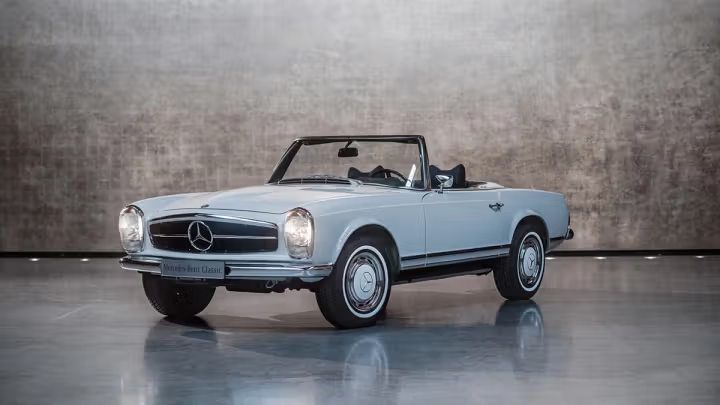
Notable successes for the Pagoda at the Spa-Sofia-Liège and Acropolis rallies showed that it could still compete at the top level. "The Spa-Sofia-Liège endurance rally covered 6,500 kilometers over mostly dirt roads and it was driven with what was essentially a production vehicle," explains Heck. "The chassis was modified and reinforced a bit, different springs were fitted, special tires were used. But at the end of the day, it was a near-production SL. That demonstrates how sporty the vehicle is to drive."
Mercedes-Benz had already decided to withdraw from motorsport in 1955. "At the height of sporting success, it was decided to focus more on passenger car development and production," says Heck. Mercedes did not return to official racing until 1987. Until then, the company supported private drivers but did not field any official constructor teams. In retrospect, this was also a stroke of luck. As Hermann notes, "It was the decisive reason why two engineers at Mercedes decided, We're founding AMG."
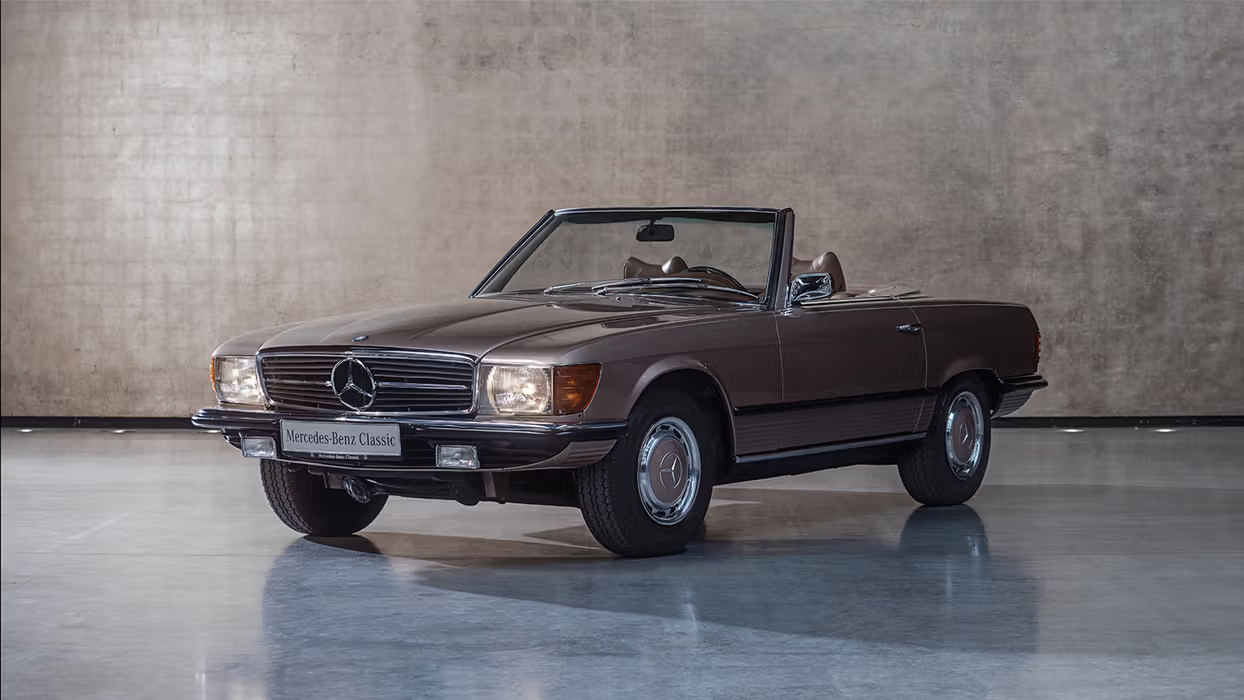
The success story that Hans Werner Aufrecht and Erhard Melcher set in motion starting in 1967 began for the SL with the R 107 series. Aimed more at the U.S. market than its predecessor – thus emphasizing luxury, comfort and safety – for Heck it nevertheless provided a good basis for a "real AMG." "This was the first SL with an eight-cylinder engine, with 3.5 liters of displacement from 1971. In the course of development, it even went up to 5.6 liters of displacement. A car with such a strong engine naturally lends itself to further optimization by AMG. "Even though we've made forward strides in many areas, the powertrain remains at the heart of AMG," says Hermann.
There are other reasons Hermann has a special relationship with the 107 series. "The 107 is one of the dearest to me," he says. "It was the SL of my youth, it was in a lot of TV series, and it had those great taillights. It was the epitome of the SL for me.”
It's hard to argue against the triumph of the R 107, which saw touring success in its incarnation as the Mercedes-Benz 450 SLC AMG "Mampe." Above all, the R 107 was built continuously for almost 18 years from 1971. With around 250,000 units, it remains the best-selling model series. Nevertheless, it was time for a successor.
This came in 1989 in the form of the R 129 designed by Bruno Sacco, which made it clear from the outset that the SL would take a giant step into the future. Chassis, body, engines – the SL R 129 took everything to a new level. "There are design sketches in our archives that date back to the early 1980s," says Heck. "That means people were already fixated on finding a legitimate successor for the 107 a decade before its market launch."
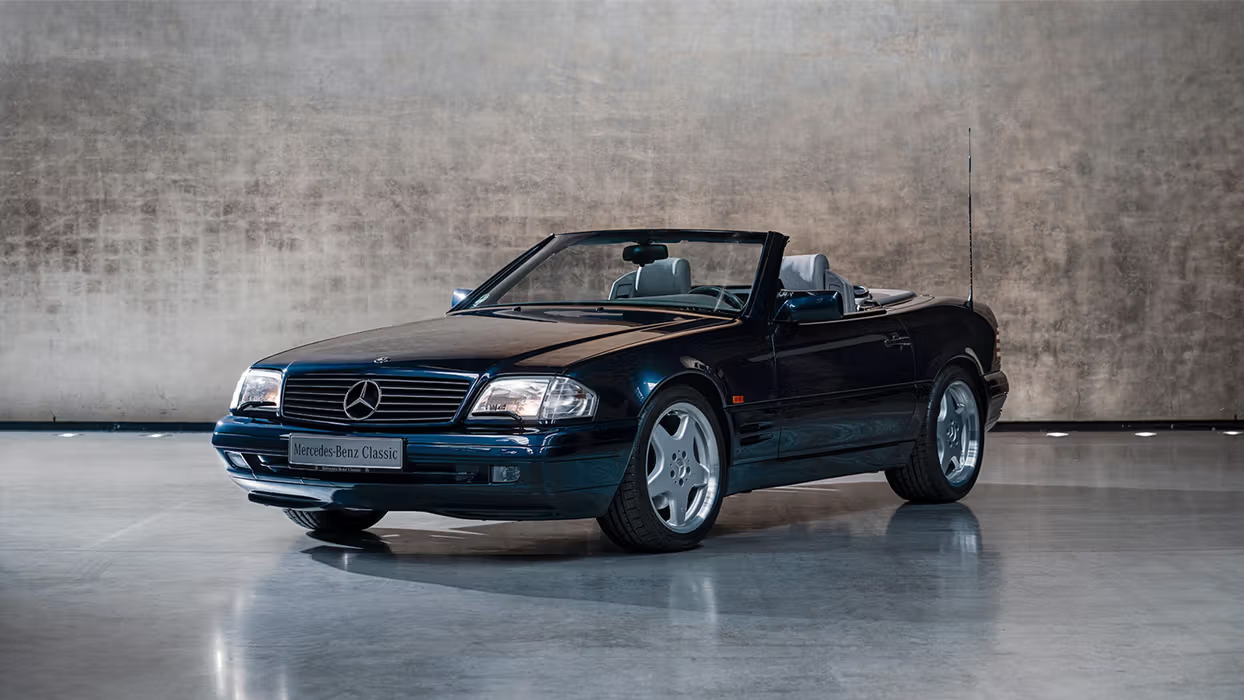
The technical leap is clear from the performance data: while the SL 500 maxed out at 240 horsepower, the SL 600 already produced 394. "I was still in my father's baby carriage when the SL was presented at the IAA in 1989," Heck recalls. But it shaped my teenage existence to a certain extent." Like Hermann, Heck "devoured car magazines.” He continues: "Then the 129 came along as a 12-cylinder and simply eclipsed everything that was on the market at the time." At least until AMG took on the R 129. And the 12-cylinder. So from 1999, the 6.0-liter V12 in the SL 73 AMG became a 7.3-liter V12, with output rising to a staggering 525 hp.
With the successor R 230, the 73 abbreviation was once again dropped. The construction period of the R 129 was still a time of trial and error. The model designations 63 for the V8 and 65 for the V12, which remain today, adorned the rear of the SL since 2008, when it was updated. Until the discontinuation of the R 231 series, there had been another hot topic of debate: the soft top was replaced by a mechanical, folding hardtop, turning the SL into a "tin roof convertible."
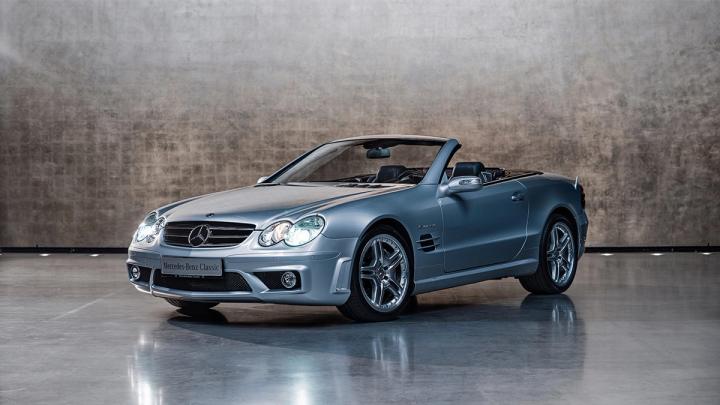
Nevertheless, for generations the SL has remained committed to comfort. "A sports car doesn't have to be uncomfortable," says Hermann. "Sportiness comes through precision. You can feel that when you steer, in the way the body moves, in the fact that I'm not left in the dark even for a millisecond about what the car is doing. That's racing, accuracy, reliability. Consistent behavior. And that's not to be confused with an uncomfortable, hard chassis."
In that precision lies again the crystal-clear link to the 300 SL. There is a reason that the body was one of the first aspects to be seen of the new SL in public – along with the lattice chassis of the 300 SL Roadster. "We're a long way from the lattice chassis in the R 232, of course," Hermann objects. "But its achievement was in its stiffness, and this at a time when the kind of precision I just described was still unknown."

In the new Mercedes-AMG SL (R 232), a lattice chassis no longer ensures maximum stiffness with minimum weight. Rather, it’s a clever mix of aluminum, steel, magnesium and fiber composites. Aluminum thrust panels on the underbody, special struts, and cast aluminum at the so-called "force nodes" make the body 18 percent more torsion-resistant than its predecessor. The transverse stiffness is even 50 percent higher than that of the Mercedes-AMG GT Roadster, with a 40 percent longitudinal stiffness. The body weighs only around 270 kilograms.
“We've transferred the requirements that were implemented back then with the lattice chassis to the modern era," says Hermann. "We built a roadster that you sit in and say, 'Wow! This is solid, this is fleet-footed, it's a roadster'." Heck also emphasises the connection to the original SL: "This shows the balancing act that both cars, the ancestor and the new car, have mastered. The SL was developed as a racing sports car, but it was also intended to be fun on country roads and was even suitable for a Sunday stroll."
One senses that Hermann would like to reveal more about the technology behind the new SL, but shortly before the world premiere, fans will have to be patient. What Hermann says about the development of the new SL – which he likens to that of the Mercedes-Benz SLS AMG – may serve as an appetizer. "We started with a blank canvas for the SLS and completely rethought many components, from the transaxle drive system to the iconic design with the gullwing doors. The employees put an incredible amount of commitment into it. I know there were a lot of night shifts involved."
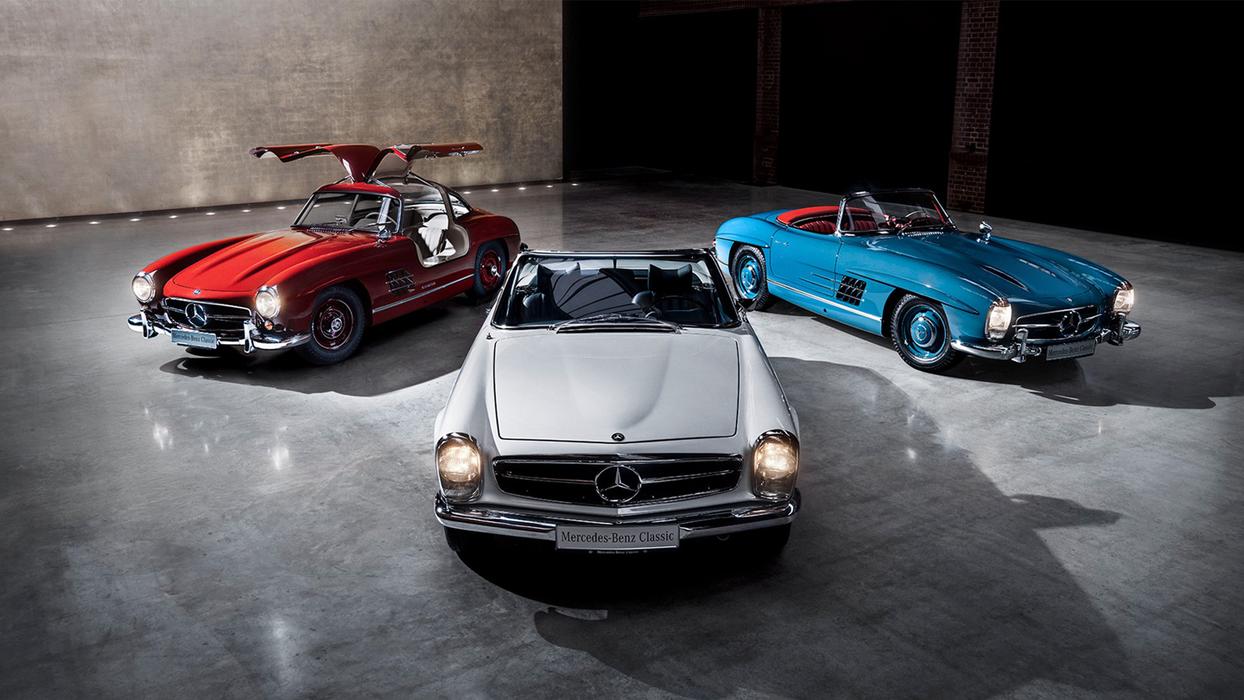
Hermann has found much of that pioneering spirit in the new Mercedes-AMG SL. "After all, we're talking about the history of an icon. In terms of emotionality and responsibility, the task was comparable to when we first developed a completely original sports car. We practically reinvented the SL all over again." A new blank canvas presented itself; AMG didn't have to build on any existing structure. "We again thought about how to approach it, which axle principle to implement, how to design the layout. What should be retained from the predecessor in spirit? What makes the SL stand out?"
The answers were found, the development is done, the final hectic weeks and months are over. Soon the new Mercedes-AMG SL will be presented to the public, and Hermann already finds occasional moments for reflection. "I get goosebumps right away," he says. "It is a car that will delight our customers in the years to come and that will definitely earn a special place in a museum at some point. We used to chase after cars like that and now I get to develop them. It's a childhood dream."

AMG Vehicles
The spot for exciting updates regarding our AMG models including walkarounds, technical backgrounds and first-hand information from our product experts.
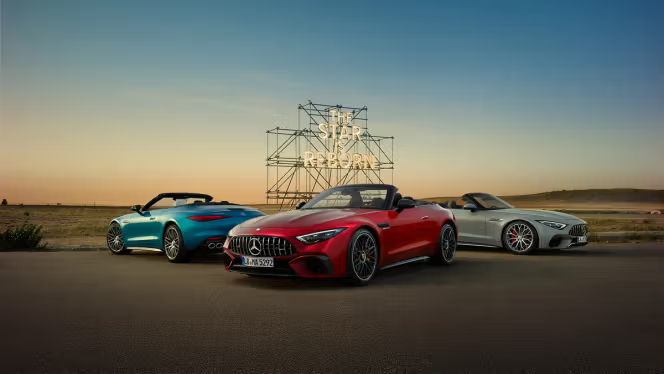
Mercedes-AMG SL Roadster
Experience the SL legend, retold at top speed by Mercedes-AMG. Witness the rebirth of an icon that’s now more athletic, more opulent and more alluring than ever. The all-new SL: the epitome of pure, uncompromising roadster pleasure.